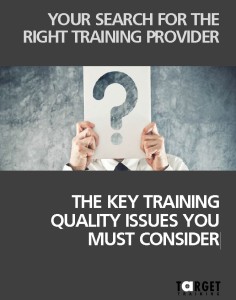Understanding contracts and decoding legalese
It doesn’t matter what language or how well you know it, everything goes out the window when the lawyers start talking – especially when it comes to contracts. Legalese is the word we use to describe the special and complex language lawyers use in their profession. Even for us native speakers, legalese can be a dense network of unknown terms and phrases that may mean one thing but often mean another.
Why do lawyers use such language?
Some think it’s to charge higher fees, but there is a more complicated answer. In the English legal system (and other legal systems, as well), stare decisis – or precedent – is used. This means that past cases are examined in order to interpret the law today. The goal is to maintain consistency throughout time so that the outcome of a case can be accurately predicted. One downside of this is that phrases from the distant past are still in use, which can be very confusing for the modern-day reader.
Another problem encountered by writers of contracts is just simple semantics. The lawyers disagree on the meaning of a word or phrase. In this case, more writing is necessary in order to clarify what exactly and precisely is meant. The lawyers are trying to make the contract as air tight as possible without any possibility of misinterpretation. I know you’re thinking, “If I can’t understand what was written in the first place, how can I misinterpret anything?” Well, that’s the goal of this blog post: to look at a few elements of contracts and put them in layman’s terms so that you can understand what’s written in the contract.
What is a contract?
Basically, it’s an agreement between two parties. In this agreement, something is done or not done in exchange for something of value. To make a contract binding, there must be an agreement between competent and assenting parties and supported by consideration along with mutuality of obligation. Is that clear enough?
Here it is in plain English: The parties wanting to enter into a contract must be of a sound mind, old enough and with the authority to do so. This is called capacity. The parties also have to agree to exchange something of value, and this is called consideration. Without it, a contract is not necessary. There also has to be an offer and an acceptance of the offer. This is what the phrase mutuality of obligation means. As long as the reasons behind the contract are legal, then a contract meeting the above criteria is also legal. The agreement is when an offer is both made and accepted. Without either, there is no contract.
There are a few types of contracts. If a contract is signed by all parties and is completely legal, it may be voidable if one of the parties, for example, lacked capacity to sign it. The contract may be void if the execution of the contract would be, in fact, illegal. However, if everything is done correctly, and the contract is carried out to completion, then it is an executed contract. If something remains to be done, then it is an executory contract. In an option contract, one party has the option to enter into another contract at a later date. If, for example, you are renting a flat with an option to buy within a certain time period, this is an option contract.
That’s a good start to such a dense topic. In a future post, I will discuss the everyday meaning of a few legal terms and phrases likely to be found in a contract. If you have any baffling legalese that you would like me to explain, just use the comments function and I’ll see what I can do :-)



















